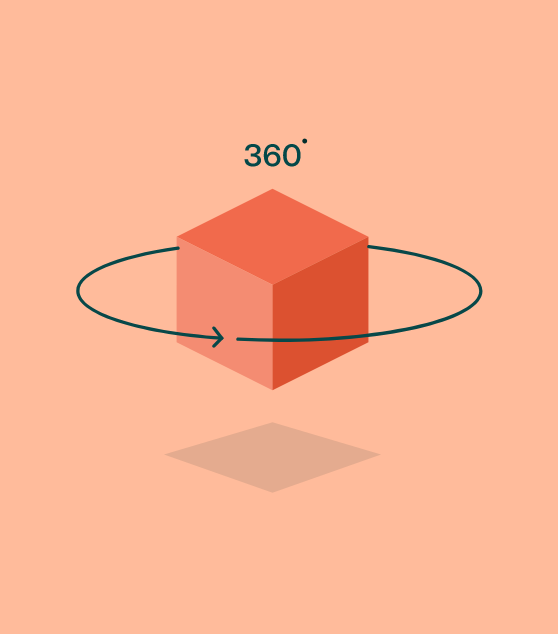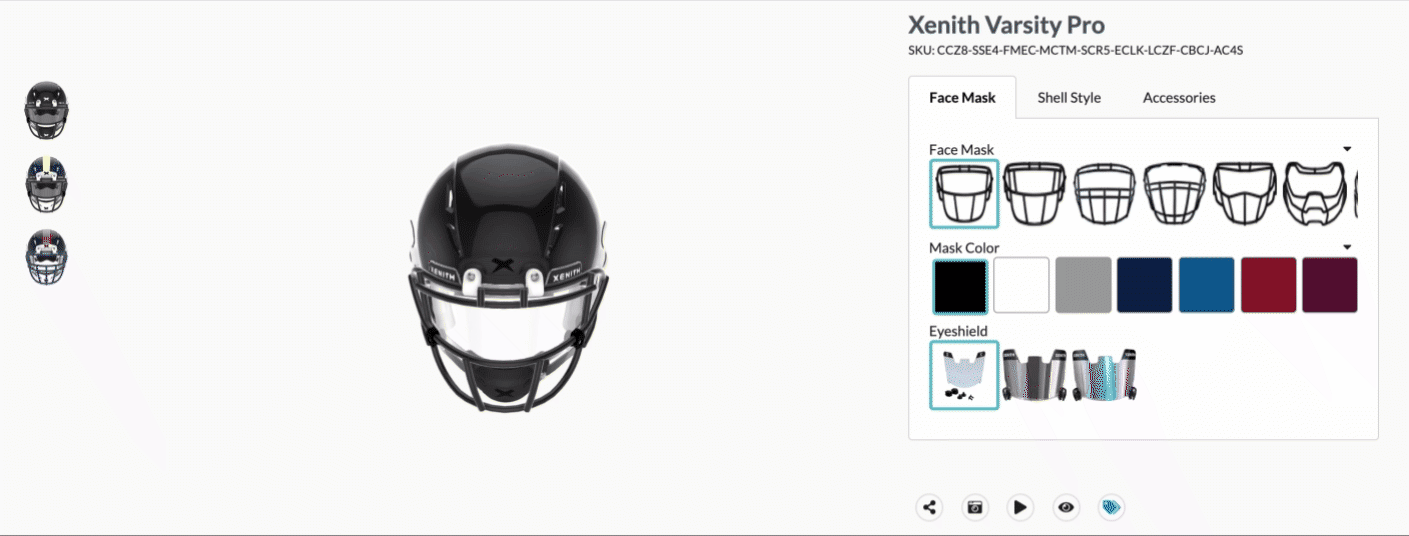The Ultimate eCommerce Product Image Guide for 2021
It’s hard to overstate the importance of visual content on an eCommerce website. In today's age, product imagery goes beyond product photos. It now includes more advanced formats like video, interactive 3D, and augmented reality, and has to do the work that was once done by physical products themselves: helping shoppers make a decision about whether or not to buy what you’re selling.
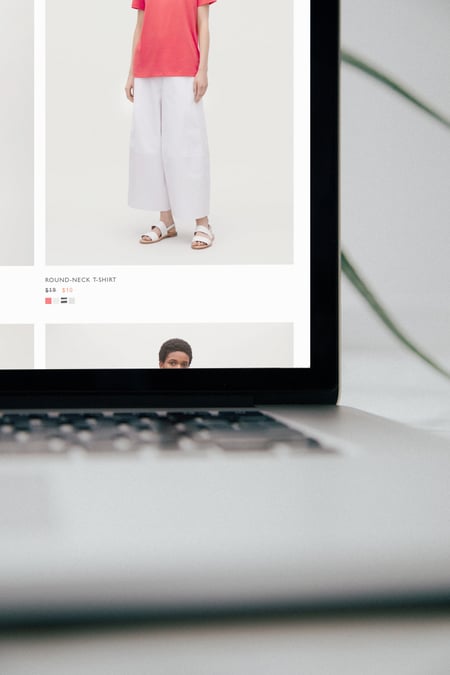
While consumers are spending more and more time on highly visual platforms like Instagram and Snapchat, eCommerce marketers have struggled to keep pace by making their product pages equally visual–and with good reason. Professional photography is expensive; eCommerce stores would have to see significant increases in sales to enjoy a positive ROI from large-scale photography investments. There are lots of helpful tips on how to think about the ROI of traditional product photography in this guide if that's what you're weighing.
But there are standards and advancements to help any business thrive in this visual economy.
In our ultimate eCommerce product image guide of 2021, we’ll walk through those standards, reveal the “hidden superpower” of product imagery, and talk about the costs incurred when you don’t invest in the best visual experience possible.
3 eCommerce Product Image Standards to You Must Consider in 2021
First, let’s look at how you can get the most out of your product imagery investment by employing one or more of these standards.
1) Optimize the quantity and quality of your imagery.
Generally speaking, the concept of “the more the merrier” applies to product imagery in eCommerce:
- Larger photos convert at higher rates than smaller photos. In one study, a 28% increase in image size led to a 63% increase in conversions. Exact results will vary, but generally, bigger is better. That said, you'll also want to make sure you're using an optimal file type (e.g., JPG, PNG, or GIF) and keeping the image file size compact to minimize load time.
Higher quality images convert better than lower-quality images. A study from 2007 found that shoppers are three times more likely to convert on websites that include high-quality imagery (including the ability to zoom in to see a product close up) than those with lower-quality images. More recently, a study found that higher-quality images helped establish trust among online shoppers.
Conversion rates rise with the number of images of a product. In a study of thousands of eBay listings, researchers found that going from zero images to one doubled conversion rates, and going from one to two doubled rates again.
These are great as rules of thumb, but the science behind them is important to understand for eCommerce marketers looking to improve website performance.
In one study, a 28% increase in image size led to a 63% increase in conversions.
First, it's key to look at quality. According to that eBay study, shoppers see the quality of product pictures as a proxy for the quality of the product they’re considering. While high-quality product images can attract shoppers’ attention and improve their confidence, low-quality images can actually do the opposite, causing shoppers to lose trust in your brand.
As for quantity, the eBay study also found that, beyond the two-image mark, adding more images generally leads to higher conversion rates.
So the challenge for eCommerce businesses is to produce a variety of great photos of every item in their catalog without grossly exceeding their budget. But before we get to budget-friendly solutions, let’s add another wrinkle.
2) Make it interactive.
Once upon a time, it was perfectly acceptable to publish static images of products on an eCommerce site. But as data delivery speeds increase and customers get used to encountering more engaging forms of visual content while online shopping, expectations have shifted.
Today, most shoppers expect an interactive user experience. They want to be able to manipulate product imagery, to zoom in and rotate an image to see a product from different angles, to click a new color swatch and instantly see the product in a different shade.
And when they’re able to utilize this functionalities, they trust brands more. A study published in the International Journal of Internet Marketing and Advertising found that the more customers can virtually interact with a product (e.g., by zooming in or rotating), the more they trust its seller.
The ability to exert “graphical control” (e.g., by changing a product’s color) also leads to increased customer trust, which can in turn increase conversions.
3) Use Virtual Photographer.
The challenge, of course, is creating high-quality visual content at scale without spending so much as to cancel out the benefit of improved conversion rates. Or anyway, that was the challenge in the days when the only option was expensive photo shoots.
Today, eCommerce marketers can tap into the power of virtual photography, like Threekit's Virtual Photographer, to generate high-resolution photorealistic images of products from every angle without ever shipping products to a studio, fussing with lighting, going back and forth with photographers, or otherwise dealing with the hassle of photography.
In fact, because virtual photography generates images from CADs and other information files, you can generate high-quality product photos for a website before the product has even been manufactured.
That has profound implications for online business marketers. With just a manufacturing file of your products, you can…
· Generate high-resolution images from any angle you want.
· Adjust lighting, backgrounds, and reflections in real time.
· Generate up to 10,000 photos per day.
A sofa image created with Virtual Photographer
Within a week, you can have your entire catalog photographed. At the start of a new season, you can update your images in just a couple of days. And because you skip the costs associated with setting up a studio shoot, you’ll only pay about 1/1,000 what you would to achieve the same feat via traditional photography.
When you do this using the Threekit platform, you also have the ability to create other types of visual content, including interactive 3D, which can provide potential customers with the kinds of near-tactile experiences that build trust.
The Secret Superpower of Product Imagery: Demand Validation
You don’t have to dig deep online to uncover dissatisfaction with the state of pockets in women’s clothing. An informal study published last year confirmed what wearers of women’s clothes have known for a long time: pockets in women’s clothing, when they exist at all, are much smaller–and therefore less functional–than those in men’s clothing.
Then there’s the search engine behavior: thousands of people search Google every month for variations on the phrase “dresses with pockets," while thousands more search for leggings with pockets.
Clearly, there’s a need. But women’s attire with functional pockets is still frustratingly hard to find.
Why? One possible explanation is that, despite the clear demand, offering something new is risky. Because pockets in women’s clothing are a relatively untested concept (somehow), retailers don’t yet know which styles and configurations will most appeal to shoppers. And without investing in a line of actual pocketed clothes, they don’t really have a way to find out.
Or rather, they didn’t have a way to find out in the era before virtual photography and online product customization software made it possible to test customer demand without actually producing any products.
The more customers can virtually interact with a product (e.g., by zooming in or rotating), the more they trust its seller.
How Virtual Photography Lets Retailers Run Real-Time Product Validation
With virtual photography software, online stores can test user demand for products before actually manufacturing them–aka perform concept testing–and only manufacture those products with demonstrated demand.
This is possible because virtual photography generates photorealistic images from a 3D model and software-generated effects, meaning that no actual products are required.
Here’s how it might look in practice:
· A clothing brand designs five variations of a dress with pockets.
· The brand generates 3D models of these garments and uses a virtual photographer to generate dozens (or even hundreds) of photorealistic images of these dresses.
· The brand uses these images in online ads and tracks clicks and orders.
· The brand manufactures only those versions of the dress that generate significant consumer demand.
But virtual photography isn’t the only way to handle product validation. Product customization software like interactive 3D also presents compelling opportunities.
How Interactive 3D Lets Retailers Gauge Consumer Demand
Interactive 3D is a highly effective way to sell configurable products to customers because it lets them see their customized products in three dimensions, in real time.
Retailers interested in concept testing pocket designs could, for example, design five pocket shapes and sizes, then let shoppers configure clothing with these options. With a product customizer that has interactive 3D capabilities, shoppers would be able to zoom in on their configured creations and rotate them as they would real clothes in a store.
This would give shoppers the opportunity to have a vote in what kinds of pockets get included in their clothing.
By establishing the right relationships with suppliers and manufacturers, retailers could even order pocketed clothing only on an on-demand basis, ensuring that they never waste money stocking a “dud,” even in new categories.
Tapping Into The Power of Customer-Directed Retail
Of course, bringing pockets to women’s fashion is not the only way to leverage the power of virtual photography and product customization software. The fashion industry in particular stands to gain from software that closes the gap between product design and customer desire.
Consider, for example, two recent instances where fashion brands couldn’t keep up with user demand after certain clothing items unexpectedly “went viral” on social media and beyond: first, when the second season of UK streaming series Fleabag hit American viewers this spring, the titular character’s most iconic outfit (a black jumpsuit) sold out at various retailers almost instantly.
Then, later this summer, a Zara dress went viral, becoming popular enough to inspire its own Instagram account.
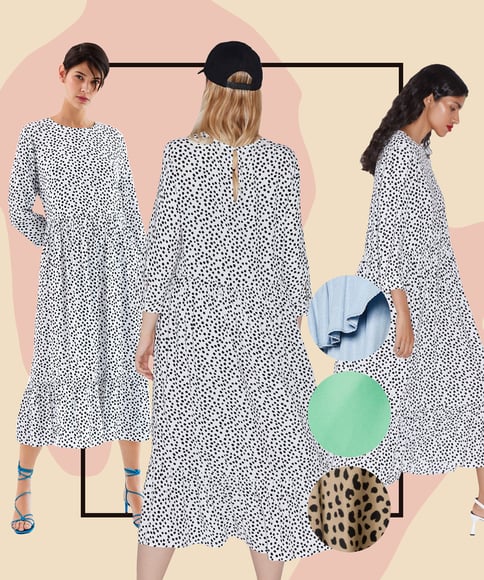 These trends illustrate two important points about fashion retail:
These trends illustrate two important points about fashion retail:
1. It’s almost impossible to predict which trends will strike a chord and which will fall flat.
2. When retailers guess wrong, they can both miss out on potential revenue (from orders they’re not able to fulfill) and lose money in the form of merchandise they can’t move.
With computer-generated visuals, though, retailers don’t have to invest in actual merchandise in order to sell it on their website. Because virtual photography and interactive 3D make it possible to generate high-quality visuals before merchandise is actually manufactured, retailers can let customer demand drive what they order from manufacturers–they can carry out real-time product validation.
Admittedly, letting customers order things that haven’t yet been produced could slow product delivery. But there are ways to solve this challenge: “beta” testing new lines to gauge interest could come offer customers a sneak peek in exchange for longer wait times, for example. The results could inform larger production plans.
3 Benefits of Using Visuals as a Product Validation Tool
Whether you’re testing dresses with pockets, a brand-new sofa design, or something entirely different, concept testing with visuals created via virtual photography can offer three key benefits, relative to concept testing alternatives:
1. Cost savings: Virtual photography lets you create images of products before they’re manufactured, which means you don’t have to produce anything until you know it will sell. This saves money by preventing investments in products that don’t perform well in the market.
2. Innovator status in the marketplace: By proactively seeking customer input and responding to that input by delivering what customers want, your brand can establish itself as a market leader in customer experience. Thanks to the savings you’ll enjoy from improved concept testing, you can earn this status while remaining affordable to the mass market, if that’s important to your brand.
3. Increased innovation agility: Because you aren’t beholden to manufacturing schedules and traditional concept testing budgets, you can test and iterate innovative projects more quickly and go to market faster when there’s demand.
Curious about how computer-generated visual content could help your brand?
The Hidden Costs of Poor Product Imagery
We’ve talked about how and why great product imagery pays for itself in outsized ROI, but there is a flipside–what does it cost businesses when visuals aren’t up to par?
There are three primary expenses that brands incur when they rely on bad (or too few) product visuals:
1) Product Returns
Average return rates for online merchandise hover around 30%. Clothing returns can be closer to 40%. And brands lose more than just the revenue itself with the return—they incur additional shipping costs and can’t resell the item at the original price, if at all. Returning eCommerce goods has become such an expectation that businesses like Optoro have sprung up to manage the process and help businesses recover losses from those returns. But it’s an exercise in mitigation rather than a solution.
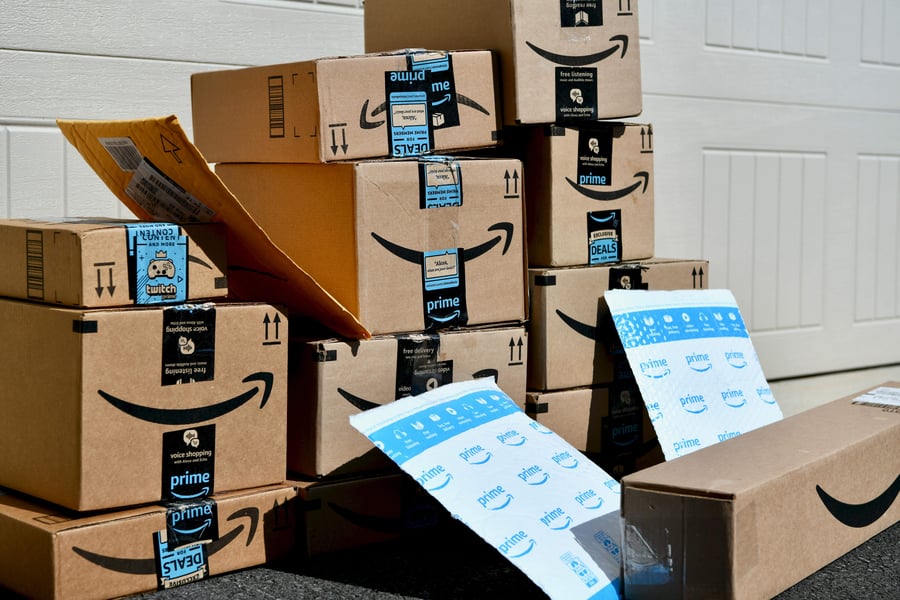
A sounder approach for all parties might be to treat the cause of the disease rather than the symptoms. And the fact that 64.2% of online shoppers report that they make a return when “items don’t match the description or expectations” suggests that lack of product detail is a culprit. If shoppers had a better sense of what they were buying, they’d be less likely to return it.
Image optimization could go a long way in aligning product expectations and making sure the shopper is getting exactly what they want. In addition to providing at least eight product images, brands can turn to interactive 3D to allow customers to zoom in, spin and see every product detail.
2) Reviews on Site
Consumer reviews have more power over eCommerce purchases than ever.
- 90% of respondents who recalled reading online reviews claimed that positive online reviews influenced buying decisions, while 86% said buying decisions were influenced by negative online reviews.
- Four out of five consumers have changed their minds about a recommended purchase after reading negative online reviews.
- 82% of consumers read a product review before purchasing an item online.
But it’s not enough to expect customers to search around the internet for authentic reviews–the best way to drive purchase on-site is to have to the review right there with the product information. And this integration isn’t free. Brands need to “buy” the credibility of a third-party review vendor like BazaarVoice or Power Reviews to provide authentic value.
That said, since reviews are designed to give people the necessary confidence to buy when they don’t feel like they fully understand everything they need to know about the product, better visuals could eliminate or cut down on the demand for them.
Four out of five consumers have changed their minds about a recommended purchase after reading negative online reviews.
3) 24/7 Customer Support
Shoppers are making eCommerce purchases around the clock. If there isn’t enough product detail available to sell them, you need someone (or some “bot”) available to fill in the blanks.
Live customer service can account for a huge portion of a human resources budget. And while more than six out of 10 U.S. consumers say that their go-to channel for simple product inquiries is a digital self-serve tool (such as a website, mobile app, voice response system or online chat), those services cost money to implement and maintain.
Clear, immersive product visuals and high-quality product descriptions can go a long way in providing sufficient product detail, which in turn decreases demand for 24/7 reassurance from customer service.
Additionally, adding alt text and alt tags can further broaden your target audience, increase accessibility on your site, and help improve your image SEO.
Creating a truly first-class visual customer experience that meets the needs of every shopper is not a simple or inexpensive solution. But while it may require a bit more of an investment upfront, it’s one that is evergreen and designed to sell more while saving costs.
As you strategize your 2021 budget, be sure to consider the potential ROI of better product imagery. An investment today could let you zip out ahead of your competition for the near future, which will position you to continue leading the pack as your brand evolves.
Threekit provides product visualization software that creates photorealistic images, interactive 3D and augmented reality experiences that help businesses sell more. To learn more, please schedule a demo with one of our teammates.
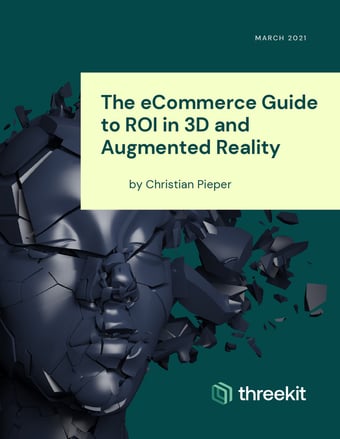
Download our eBook
Learn when it’s time to digitize your eCommerce photography and how to automate images with our guide.



